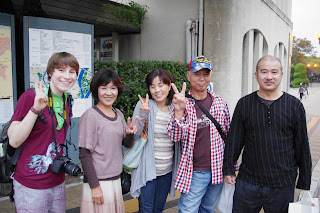I decided to try something that was more at the core of Japanese culture. Something that comes from China and becomes part of the culture itself, Kanji, is now losing its hold over the language. As time progresses, people have forgotten some readings and many writings. In order to make some research on this, I decided to give some Kansai Gaidai students a 二級(level 2) test on a Nintendo DS Kanji Practice game called "Zaidan Houjin Nihon Kanji Nouryoku Kentei Kyoukai Kounin." Interestingly enough the results were all over the chart; here they are:
48, 32, 96, 132, 36, 60, 72, 48, 36, 88, 64, 68, 104, 92, 132, 44, 52, 116, 28, 108, 48, 44, 136, 24, 108, 60, 96, 84, 96, 76, 20, and 142
Interestingly enough, I asked each person to see if they had studied abroad.Only 3 out of all the people had the experience of studying abroad (Australia 3 months, Mississippi 4 months, Canada 7 months). I thought that the scores would be worse from these people, but instead they ended up being very different (52, 84, 136). Furthermore, I also asked if they were freshman, sophomore, junior, or senior to see how this would affect the scores. I thought that being in a foreign language university where many classes are given in English, the people are the junior/senior level would do the worst. This is actually wrong. The three highest scores (132, 136, and 142) were people in the junior/senior level and were all guys (one of the 132 was a freshman). 3 participants decided to opt. out, because they said they were tired of know knowing so many of them. Most of the lower scores were freshman/sophomore (although some were also senior/junior). Lastly, 16 of the participants were females and 19 were male (35 total).
I'm not sure how the change of Kanji can be portrayed between the different grade levels in Kansai Gaidai, but as far as scoring goes. The person who scored the highest (142) still didn't pass the exam. The passing grade is a 160. This shows the amount of Kanji that is lost. Below are two videos of participants. The reactions to the test varied among them. (I asked for permission to use these videos for the class):

















